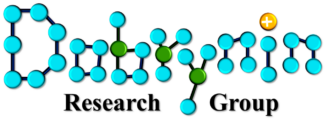Vahid Karimkhani, Mohammad Vatankhah-Varnosfaderani, Andrew N. Keith, Erfan Dashtimoghadam, Benjamin J. Morgan, Michael Jacobs, Andrey V. Dobrynin, and Sergei S. Sheiko
One of the notorious problems in dielectric elastomer actuators (DEAs) is electromechanical instability resulting in uncontrolled breakdown, which precludes large reversible strokes. We resolved this issue by using thermoplastic elastomers (plastomers) self-assembled from linear-bottlebrush-linear triblock copolymers composed of poly(methyl methacrylate) linear blocks and polydimethylsiloxane brush blocks. These materials demonstrate a unique combination of initial softness and intense strain-stiffening at larger deformations, which is analogous to the signature behavior of biological tissues. Plastomer-based free-standing DEAs operate at low electric fields (∼1 V/μm–1) and enable large (5-fold) reversible strokes. Given the excellent thermal stability and hydrophobicity of silicone, these solvent-free materials are good candidates for the design of artificial muscles and are capable of operating in a broad range of environments, including the human body and ocean, without losing actuation performance.

